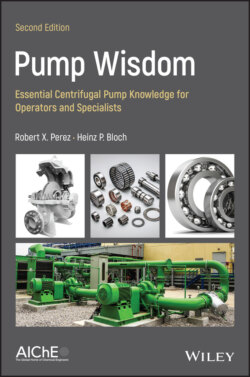Читать книгу Pump Wisdom - Robert X. Perez - Страница 24
Securing Pumps in Place – With One Exception
ОглавлениеAgain, proper field installation of pumps has a measurable positive impact on pump life. Even a superb design will give poor results if poorly installed. A moderately good pump design, properly installed, will give good results [2]. Proper installation refers to a good foundation design, no pipe strain (see Chapter 4), and good shaft alignment (Chapter 14) to name just a few. No pump manufacturer designs its pumps strong enough to act as a solid anchoring point for incorrectly supported piping, or piping that causes casings and pump nozzles to yield and deflect. Also, pumps have to be properly secured to their respective baseplates, and these baseplates have to be well‐bonded to the underlying foundation. Epoxy grout is used to do this bonding in modern installations.
Figure 3.1 ANSI pump set on a stilt‐mounted baseplate.
Source: ITT/Goulds, Seneca Falls, NY.
There is one exception, however. Vertical in‐line pumps (Figure 3.2) are not to be bolted to the foundation. They are intended to respond to thermal and other growths of the connected piping and must be allowed to float or slide a fraction of an inch in the x‐ and y‐directions. The foundation mass under vertical in‐line pumps can be much less than that under the more typical horizontal pump.
Making the foundation mass three to five times the mass of the pump and its driver has been the rule of thumb for horizontal pumps. For vertical in‐line pumps, it is acceptable to make the concrete foundation about one‐and‐a‐half to twice the mass of the pump‐and‐driver combination [3].
Figure 3.2 Vertical in‐line pumps are not to be bolted to the foundation. They should be allowed to move with the connected pipes.
